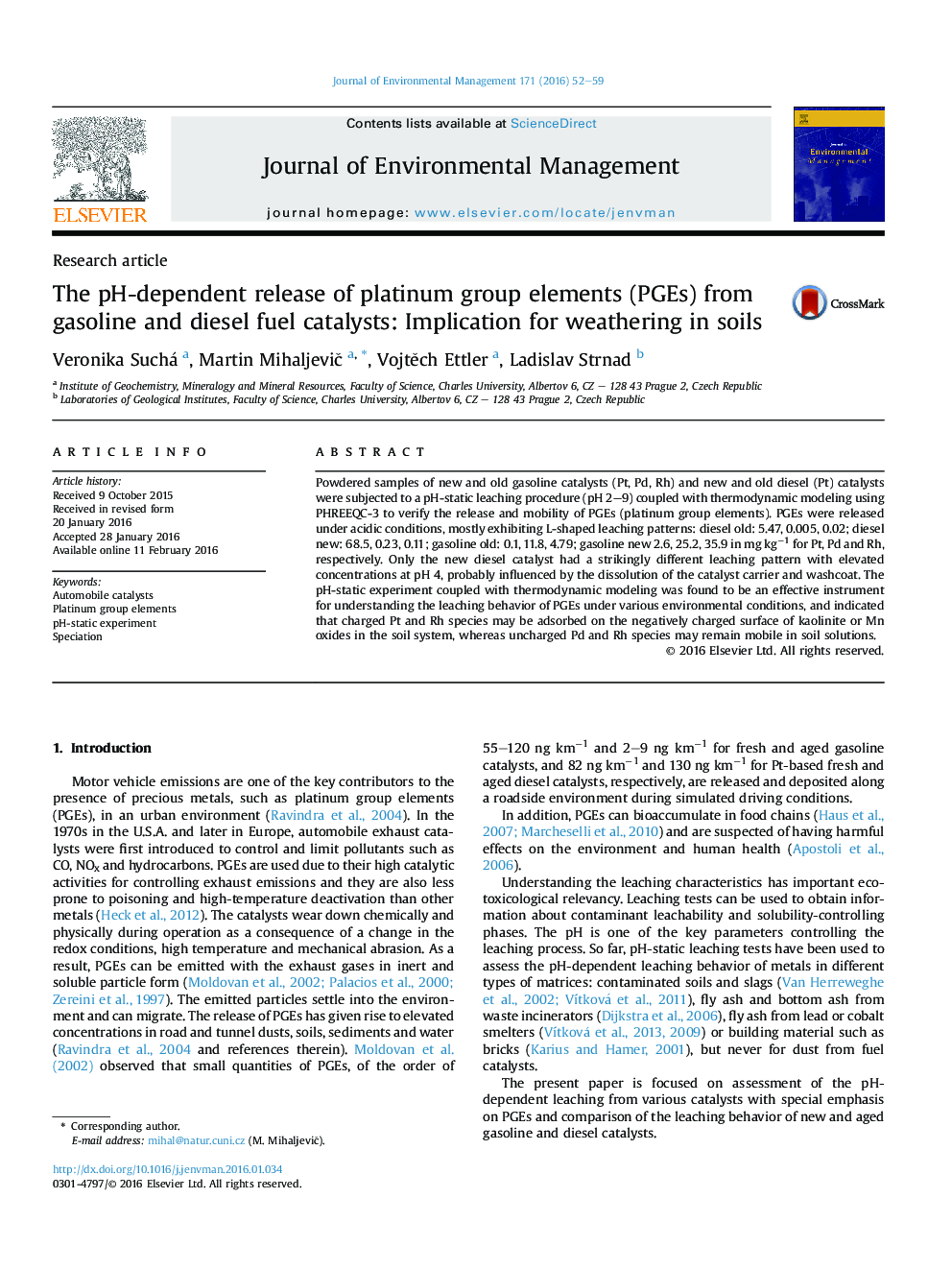| کد مقاله | کد نشریه | سال انتشار | مقاله انگلیسی | نسخه تمام متن |
|---|---|---|---|---|
| 1055297 | 1485241 | 2016 | 8 صفحه PDF | دانلود رایگان |
• Leaching of PGEs from old and new diesel and gasoline catalysts is pH-dependent.
• Highest leaching of PGEs starts under acidic conditions.
• Palladium is highly mobile due to the formation of uncharged species.
• Higher release of PGEs may occur when catalysts are deposited in acidic soils.
Powdered samples of new and old gasoline catalysts (Pt, Pd, Rh) and new and old diesel (Pt) catalysts were subjected to a pH-static leaching procedure (pH 2–9) coupled with thermodynamic modeling using PHREEQC-3 to verify the release and mobility of PGEs (platinum group elements). PGEs were released under acidic conditions, mostly exhibiting L-shaped leaching patterns: diesel old: 5.47, 0.005, 0.02; diesel new: 68.5, 0.23, 0.11; gasoline old: 0.1, 11.8, 4.79; gasoline new 2.6, 25.2, 35.9 in mg kg−1 for Pt, Pd and Rh, respectively. Only the new diesel catalyst had a strikingly different leaching pattern with elevated concentrations at pH 4, probably influenced by the dissolution of the catalyst carrier and washcoat. The pH-static experiment coupled with thermodynamic modeling was found to be an effective instrument for understanding the leaching behavior of PGEs under various environmental conditions, and indicated that charged Pt and Rh species may be adsorbed on the negatively charged surface of kaolinite or Mn oxides in the soil system, whereas uncharged Pd and Rh species may remain mobile in soil solutions.
Figure optionsDownload as PowerPoint slide
Journal: Journal of Environmental Management - Volume 171, 15 April 2016, Pages 52–59
